Repetitive practice of yoga ashtanga series, or vinyasa flows, or any forms of yoga asanas will stretch, press, and sweat our yoga mats. At a certain stage, it will show some signs of wear and tear that might impact our yoga practice. There are no hard and fast rules about when we need to replace our yoga mats. However, if you notice some of these signs below, probably it is time that you should buy a new yoga mat.
Summary of Contents
1. My mat does not provide enough of grip anymore
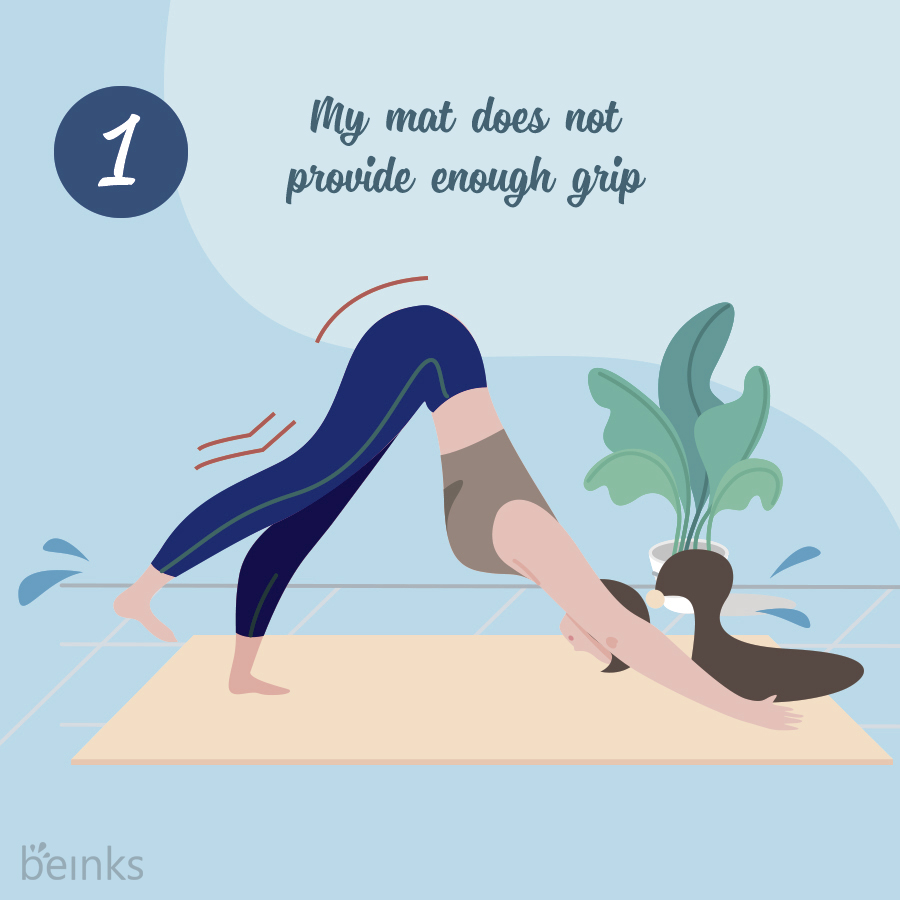
This sign is important for those who practice yoga flows that require lots of movements and anchorings. If you find it hard to keep your hands and feet from slipping on the mat during Downward Dog, Triangle Pose, or Warrior Pose, it could mean that your mat is not sticky enough for your practice.
It really depends on your personal type of yoga practice, though. If you practice Yin, Meditation or Restorative yoga, you probably do not need a sticky mat.
So it is up to each individual practitioner to decide whether the mat needs a replacement due to its lack of grip.
2. My mat seems to fall apart

If you notice some particles or residues of yoga mat on the floor, it is a sign of wear and tear of a yoga mat. This deterioration can be seen in any type of yoga mats, but it is more common with cheaper and low-quality yoga mats, after a period of usage. For natural rubber yoga mats, due to their bio-degradable material, this process can start after 3 – 5 years of regular usage.
Pay attention to this sign, especially when you practice yoga in studios surrounded by lots of yoga fellows, or at home where you have pets or children. You do not want them to breathe in or play with these “leftover” trash.
3. My mat seems to be uneven

Have you ever noticed a yoga mat that has a different thickness along its body? It does not look right. The edges of your mat and its surface should have the same thickness.
The part where your hands and feet land the most often tends to sink and flatten the most. Soon it will not provide enough cushion and support for your joints, wrists, knees, and ankles. It is also a sign that you should consider replacing it with a new yoga mat.
4. I have difficulty holding balancing poses
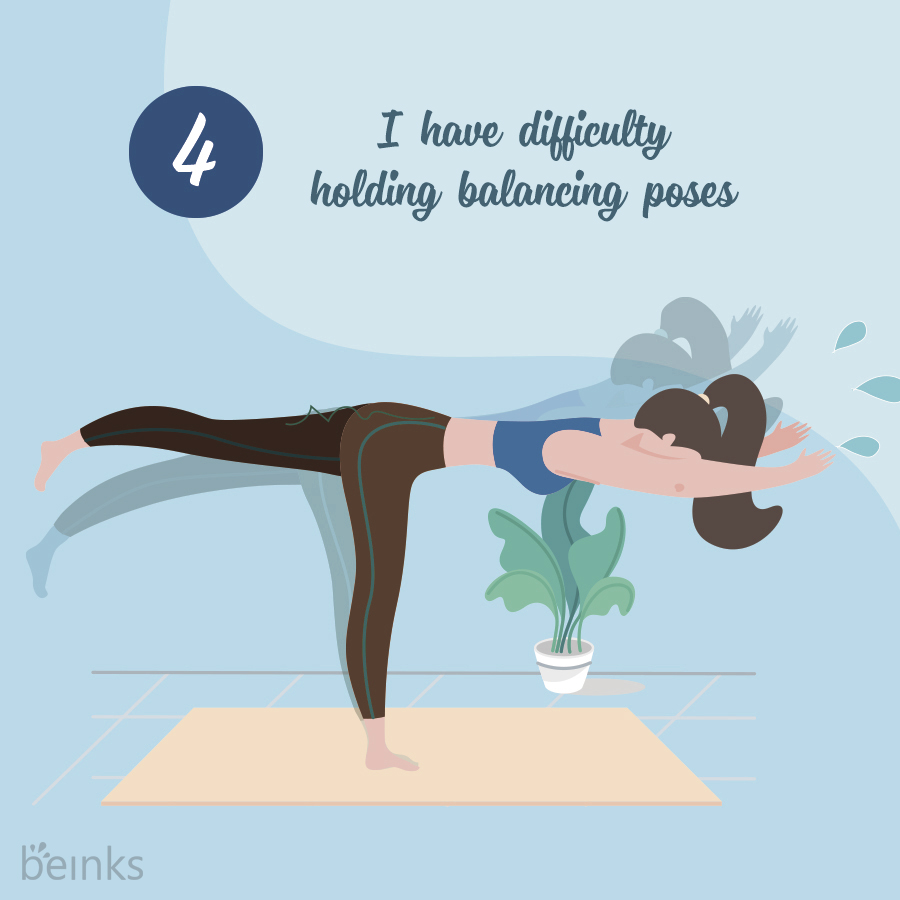
This problem can be due to 2 different reasons.
The first reason can be the unevenness of the mat, which makes it difficult for you to hold balance poses.
The second reason can be due to the “extra-cushion” of the mat, which creates a feeling of sinking and bouncing at the same time. Hence, it takes much more effort and concentration for you to hold yourself in poses like Headstand, Warrior, Half Moon poses.
5. My joints do not feel very comfortable (even hurt sometimes)
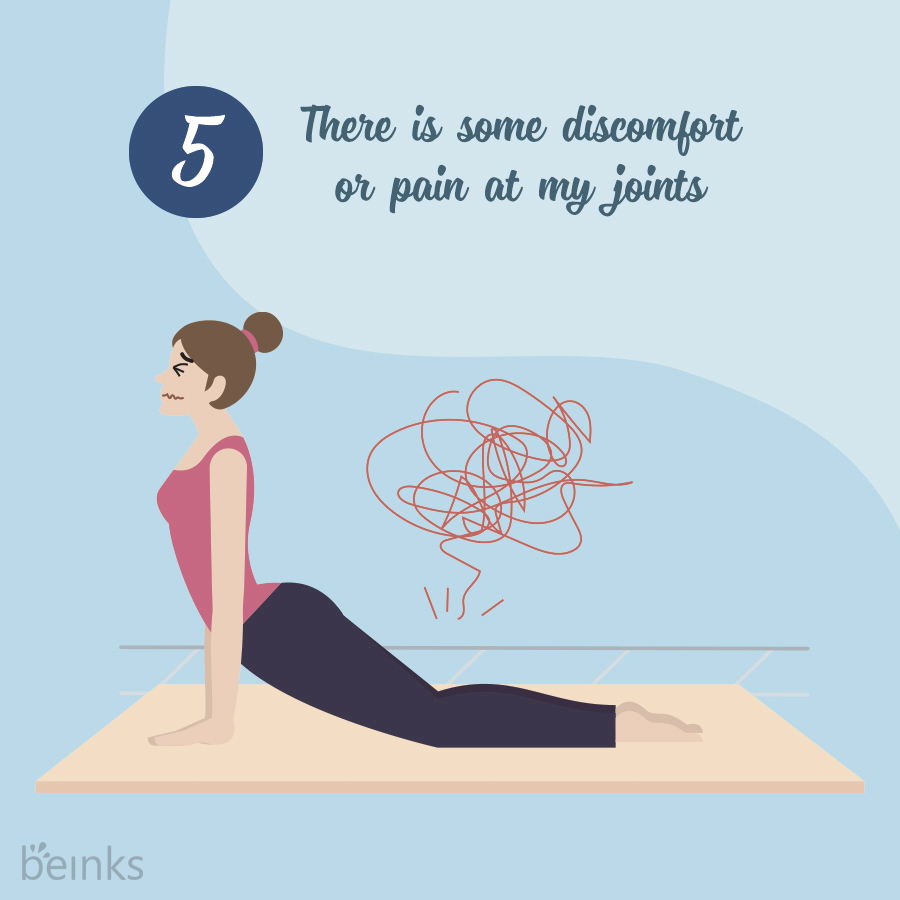
Some poses like Cat and Cow, Camel, and Plank poses can put weight and pressure on our joints. If you find yourself quite uncomfortable during these poses, it’s most certainly time for a new mat – a thicker one with more cushion to provide extra support for your wrists, knees, and ankles.
If a softer and thicker mat does not solve the discomfort of your joints, it might be a good idea for you to further check with your physician before continuing with your yoga practice.
6. My mat is going bald

Bald spots happen due to constant practice, and this process is normal after you have practiced on the mat for a while. Bald spots usually develop into holes or slippery parts on your yoga mat, where your legs or arms land the most.
With these bald spots, you will probably experience imbalance and slipping, which can be quite inconvenient or even put yourself in danger in certain poses. So if this sounds like what you are encountering with your yoga mat, it’s time to look out for a new better yoga mat.
7. My mat does not smell very nice

Yoga brings us calmness, serenity, and peace. If some unpleasant smells come from our yoga mat, it will disturb our mind, and we will find it hard to focus on the practice.
If cleaning does not help to get rid of the smell, it’s time to consider getting a new yoga mat.
Just a small note to those who use natural rubber yoga mats, there might be a strong natural rubber smell during the first couple of weeks. It should ease or go away naturally if you roll it out and keep it flat for a few weeks. So be aware that this rubber smell is different from the “stinky” smell of constant sweat absorbed into the mats.
8. My mat is too heavy or too light
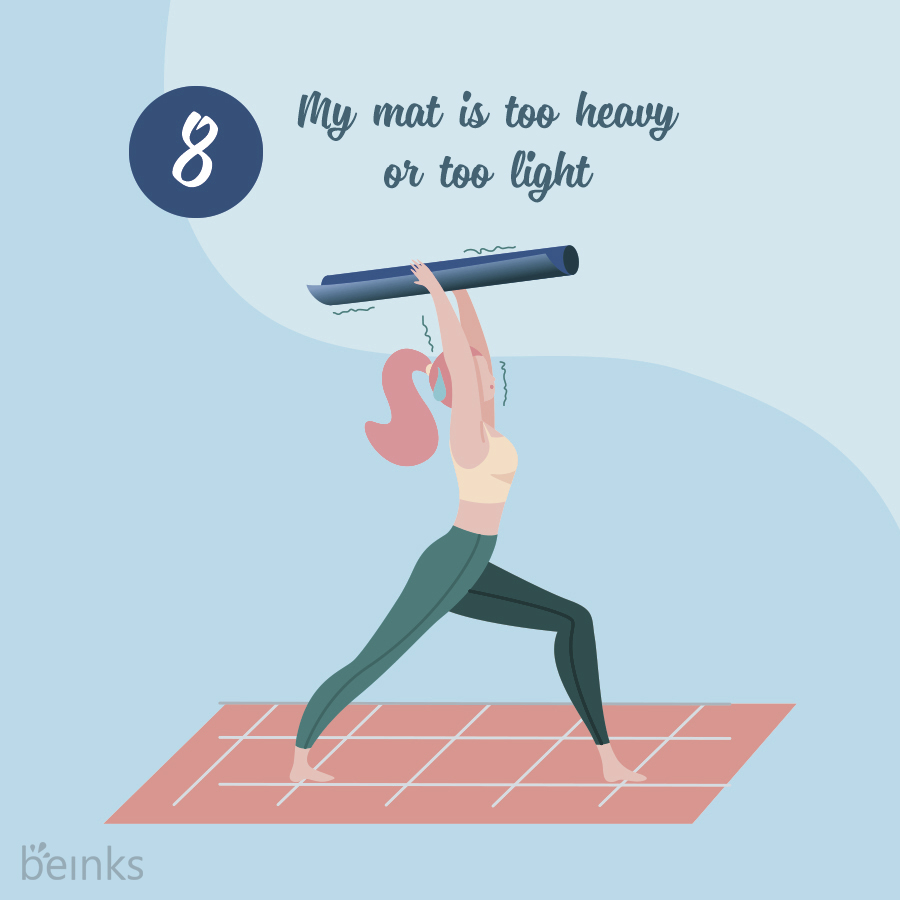
We are talking about the weight of yoga mats.
If you travel a lot, the last thing you want to do is transporting a heavy yoga mat. You should consider having a 1 mm or 2mm yoga mat that can be folded and fit nicely in your bag or luggage. Or you can consider a thicker mat but not more than 2kg for traveling purpose.
On the opposite, if you find your yoga mat too light, which makes it impossible to be grounded and flattened on the floor, you should consider a heavier yoga mat. Yoga mats made of natural rubber is usually much heavier than (cheap) PVC or TPE material. With a weight of about 2kg – 3kg, natural rubber yoga mats will stay more grounded and stable on the ground. You will not encounter any sliding or “surfing” experience with these mats.
That is it! 8 signs for a new yoga mat. Do you notice any of these signs with your yoga mat? If yes, consider a new one to enhance your yoga practice. And to save you some time for researching on a new good yoga mat, read this article “11 questions you should ask before buying a new yoga mat“.
IDEAS ON HOW TO UPCYCLE AND REPURPOSE YOGA MATS
If you find it difficult to put your yoga mat into the trash bin, you don’t have to throw it just yet. Here are some creative ideas on how to upcycle and repurpose your yoga mats.
- Use them as carpet backings for anti-slip purposes
- Cut your yoga mats into square shapes to use as outdoor seatings when you don’t want to get your bottom dirty or to go under furniture to protect the floor and stop sliding
- Donate clean and undamaged mats to charities that help to serve people who will need them.
- Make an eco-bulletin board
- Cut out squares to go under furniture to protect the floor and stop sliding
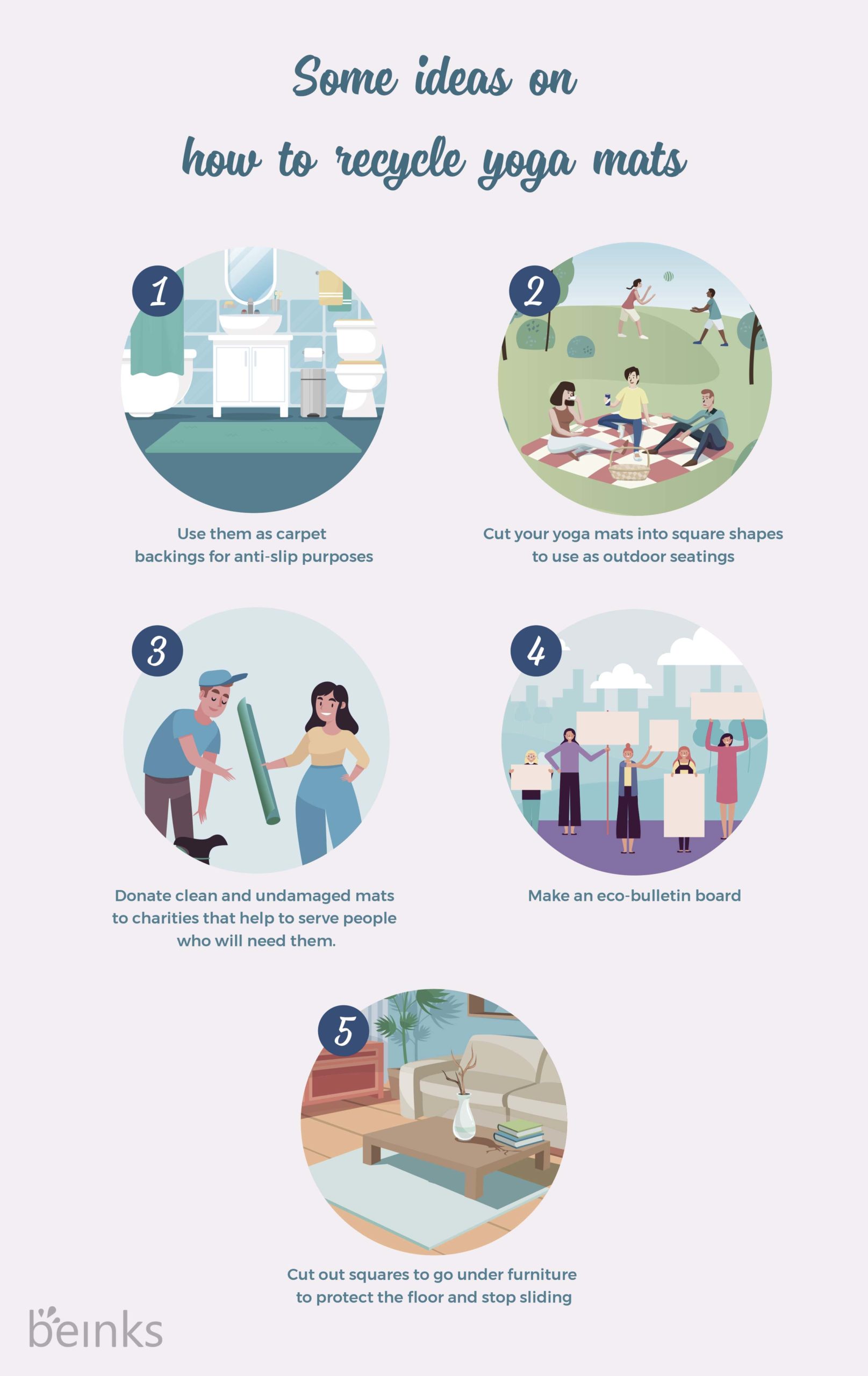



[…] already have a yoga mat, and somewhere in your mind saying that it might not be the right mat, read this article to find out if you should replace your current yoga mat with a better […]